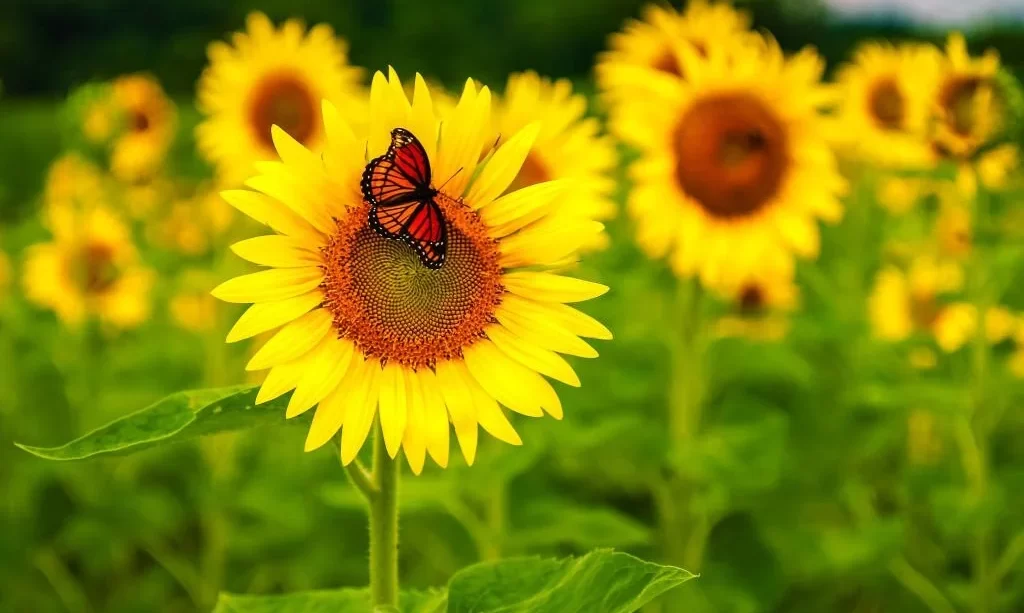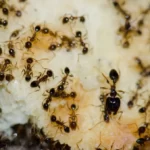Sunflowers, with their cheerful and radiant blooms, are a symbol of sunshine and warmth in gardens and landscapes around the world. These iconic flowers capture the hearts of many with their vibrant colors and towering stalks. But have you ever wondered about the timeline of a sunflower’s life? In this guide, we’ll unravel the captivating journey of sunflowers, from their initial planting and growth phases to the stunning bloom that brightens our days.
- FEED YOUR PLANTS: Burpee’s All-Purpose Organic Plant Food is formulated to keep your plants growing and happy throughout the season. Major nutrients as well as calcium, minor nutrients, and some of the beneficial microbes that help keep the soil and plants healthy are released immediately and continue to feed your plants for up to 3 months.
- FOR VEGETABLES, FLOWERS & HERBS: Use this natural plant food for seed starting, bedding plants, vegetable gardens, trees, shrubs and flower containers. OMRI labeled organic. The custom blend promotes plant growth and more blooms! Great for indoor or outdoor plants.
- ORGANIC CERTIFIED: OMRI listed for organic gardening use, this plant food safely keeps your soil and plants as healthy as they can be. Easy to apply granules release essential nutrients and deliver fast-acting results for all types of plants in your home garden. Follow instructions on the bag for how much plant food to apply.
- GREAT FOR CONTAINERS: Use this balanced mix to promote growth of flowers, vegetable and herbs in patio pots and containers. You’ll see the difference in plant health, fruit production and vibrancy of blooms. A natural fertilizer for growing your best garden.
- Since 1876: Generations of customers have trusted Burpee to deliver the highest quality products and service. Gardeners rely on Burpee for accurate plant information and how-to tips that make gardening easier and more successful. Let’s grow together!
Planting and Growth Phase
The life of a sunflower begins with the planting and growth phase, setting the stage for its remarkable journey. Here’s a closer look at this crucial stage:
- Planting: Sunflowers typically start their journey when their seeds are sown in the spring, a time when the soil warms up and becomes conducive to germination. This marks the beginning of their life cycle.
- Germination: After planting, sunflower seeds come to life by germinating. It usually takes around 7 to 14 days for the first green shoots to emerge from the soil.
- Seedling Stage: During this initial phase of growth, young sunflowers focus on establishing their root systems and developing their first sets of leaves. This stage typically lasts for about 2 to 3 weeks, during which the tiny plants prepare for the remarkable growth to come.
Understanding the planting and growth phase is the first step in appreciating the beautiful journey that sunflowers undertake. From these humble beginnings, they embark on a transformation that culminates in their iconic blossoms.
Vegetative Growth
As sunflowers progress through their life cycle, they enter a phase of robust vegetative growth. Here’s what to expect during this stage:
- Stem and Leaf Growth: During the vegetative growth phase, sunflowers exhibit vigorous upward growth, with their sturdy stems reaching impressive heights. This period is marked by the development of large, broad leaves that contribute to the sunflower’s iconic appearance.
- Leaf Arrangement: Sunflower leaves are arranged alternately along the stem and are typically heart-shaped with serrated edges. They play a crucial role in capturing sunlight for photosynthesis, fueling the plant’s growth.
- Duration: The duration of the vegetative growth phase can vary depending on factors such as sunflower variety, environmental conditions, and care. In some cases, this phase may last for several weeks as the plant establishes itself and prepares for the next stage of its life cycle.
Budding and Blooming
One of the most anticipated phases in a sunflower’s life is when it begins to produce buds and burst into full bloom:
- Budding: As sunflowers continue to grow, they form distinctive flower buds at the tips of their stalks. These buds hold the promise of the vibrant blooms to come.
- Blooming: The blooming phase is when sunflowers reveal their dazzling golden or yellow petals in all their glory. The duration of full bloom typically lasts for about 2 to 3 weeks, showcasing the sunflower’s radiant beauty.
- Pollination: During this time, sunflowers attract pollinators like bees, which play a crucial role in transferring pollen between flowers, facilitating fertilization, and ultimately contributing to seed production.
The budding and blooming phase is when sunflowers truly shine, offering a stunning display of nature’s beauty. It’s a time when their vibrant colors and impressive size capture the attention of admirers and provide valuable resources for pollinators.
Pollination and Seed Formation
After the captivating bloom of sunflowers, the focus shifts to an essential phase involving pollination and seed formation:
- Pollination: During the blooming phase, bees and other pollinators are drawn to the nectar-rich flowers. As they visit each sunflower, they inadvertently transfer pollen from one bloom to another, facilitating the fertilization of the flowers.
- Seed Formation: Once pollinated, the petals of the sunflower begin to wither and fall away, revealing the central disk where seeds develop. This disk contains hundreds of tiny florets, each capable of producing a single seed. Over time, the seeds mature and gradually change in color, usually from white or green to brown or black, depending on the sunflower variety.
Ripening and Harvest
The final chapters of a sunflower’s life involve ripening and harvest:
- Ripening: Sunflower seeds continue to mature and ripen on the plant. This process involves the hardening of the seeds and the accumulation of nutrients within each one. The back of the seed head typically turns brown, signaling that the seeds are approaching full maturity.
- Harvest: Sunflowers are usually ready for harvest in late summer or early fall, once the seeds have fully ripened. Gardeners and farmers can collect the seeds for various purposes, including culinary use, bird feed, or planting the following year. Harvesting is a significant step in the sunflower’s lifecycle, ensuring that its seeds are put to good use.
Conclusion
The life of a sunflower is a captivating journey through various phases, from the initial planting and growth to the brilliant bloom that captivates our senses. Understanding the lifespan of sunflowers allows us to appreciate the remarkable transformation these flowers undergo and the vital role they play in providing sustenance for pollinators and, ultimately, for us. Whether you’re growing sunflowers for their stunning appearance or their nutritious seeds, their journey from seed to full bloom is a testament to the beauty and wonder of the natural world.




